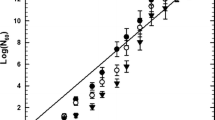Abstract
Background, Aim and Scope
Due to their large potential for manifold applications, the use of nanoparticles is of increasing importance. As large amounts of nanoparticles may reach the environment voluntarily or by accident, attention should be paid on the potential impacts on the environment. First studies on potential environmental effects of photocatalytic TiO2 nanoparticles have been performed on the basis of widely accepted, standardized test systems which originally had been developed for the characterization of chemicals. The methods were adapted to the special requirements of testing photocatalytic nanoparticles. Materials and Methods: Suspensions of two different nanoparticles were illuminated to induce their photocatalytic activity. For testing, the growth inhibition test with the green alga Desmodesmus subspicatus and the immobilization test with the daphnid Daphnia magna were selected and performed following the relevant guidelines (algae: ISO 8692, OECD 201, DIN 38412-33; daphnids: ISO 6341, OECD 202, DIN 38412-30). The guidelines were adapted to meet the special requirements for testing photocatalytic nanoparticles. Results: The results indicate that it is principally possible to determine the ecotoxicity of nanoparticles. It was shown that nanoparticles may have ecotoxicological effects which depend on the nature of the particles. Both products tested differ in their toxicity. Product 1 shows a clear concentration-effect curve in the test with algae (EC50: 44 mg/L). It could be proven that the observed toxicity was not caused by accompanying contaminants, since the toxic effect was comparable for the cleaned and the commercially available product. For product 2, no toxic effects were determined (maximum concentration: 50 mg/L). In the tests with daphnids, toxicity was observed for both products, although the concentration effect-curves were less pronounced. The two products differed in their toxicity; moreover, there was a difference in the toxicity of illuminated and non-illuminated products. Discussion: Both products differ in size and crystalline form, so that these parameters are assumed to contribute to the different toxicities. The concentration-effect curves for daphnids, which are less-pronounced than the curves obtained for algae, may be due to the different test organisms and/or the differing test designs. The increased toxicity of pre-illuminated particles in the tests with daphnids demonstrates that the photocatalytic activity of nanoparticles lasts for a period of time. Conclusions: The following conclusions can be drawn from the test results: (I) It is principally possible to determine the ecotoxicity of (photocatalytic) nanoparticles. Therefore, they can be assessed using methods comparable to the procedures applied for assessing soluble chemicals. - (II) Nanoparticles may exert ecotoxicological effects, which depend on the specific nanoparticle. - (III) Comparable to traditional chemicals, the ecotoxicity depends on the test organisms and their physiology. - (IV) The photocatalytic activity of nanoparticles lasts for a relevant period of time. Therefore, pre-illumination may be sufficient to detect a photocatalytic activity even by using test organisms which are not suitable for application in the pre-illumination-phase. Recommendations and Perspectives: First results are presented which indicate that the topic 'ecotoxicity and environmental effects of nanoparticles' should not be neglected. In testing photocatalytic nanoparticles, there are still many topics that need clarification or improvement, such as the cause for an observed toxicity, the improvement of the test design, the elaboration of a test battery and an assessment strategy. On the basis of optimized test systems, it will be possible to test nanoparticles systematically. If a potential risk by specific photocatalytic particles is known, a risk-benefit analysis can be performed and, if required, risk reducing measures can be taken.
Similar content being viewed by others
Author information
Authors and Affiliations
Corresponding authors
Rights and permissions
About this article
Cite this article
Hund-Rinke, K., Simon, M. Ecotoxic Effect of Photocatalytic Active Nanoparticles (TiO2) on Algae and Daphnids (8 pp). Env Sci Poll Res Int 13, 225–232 (2006). https://doi.org/10.1065/espr2006.06.311
Received:
Accepted:
Published:
Issue Date:
DOI: https://doi.org/10.1065/espr2006.06.311




